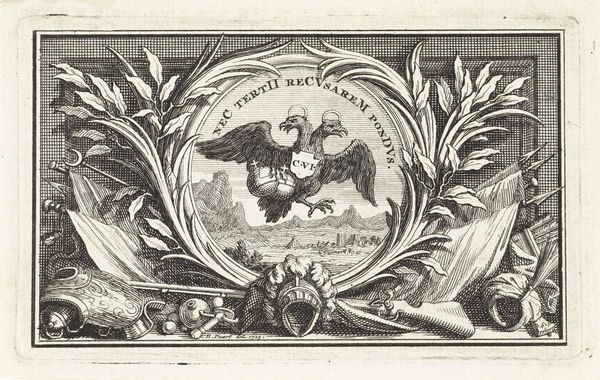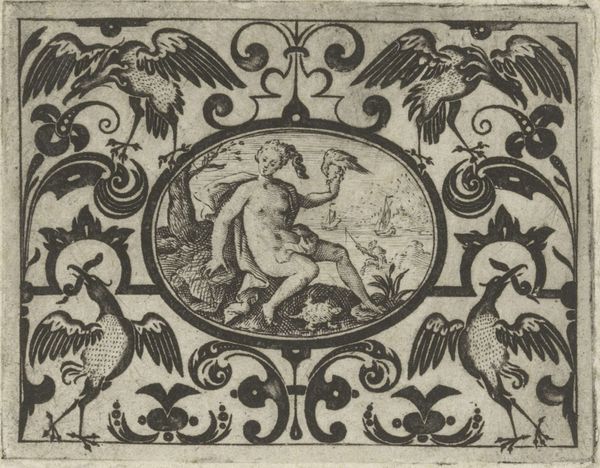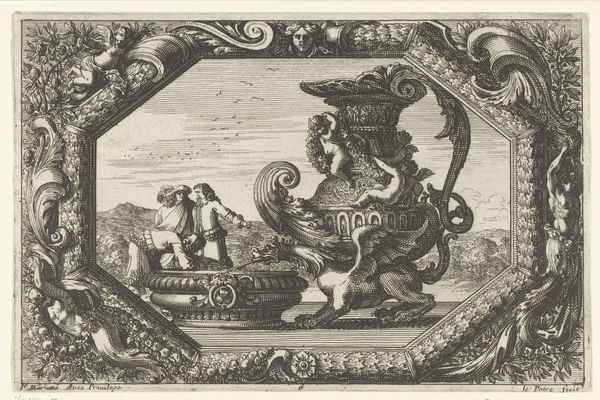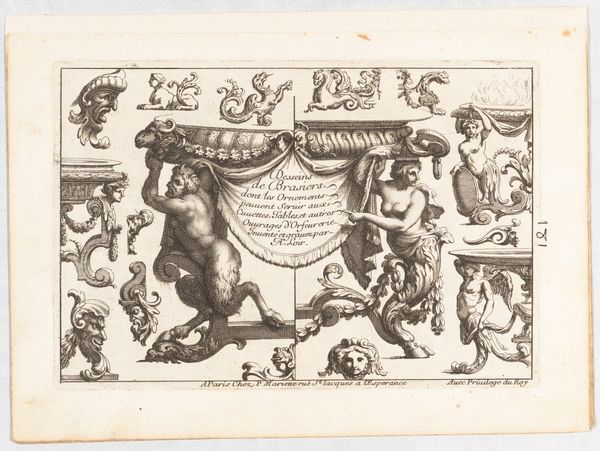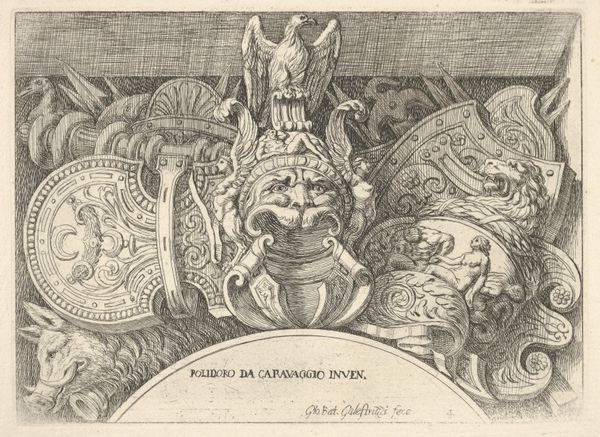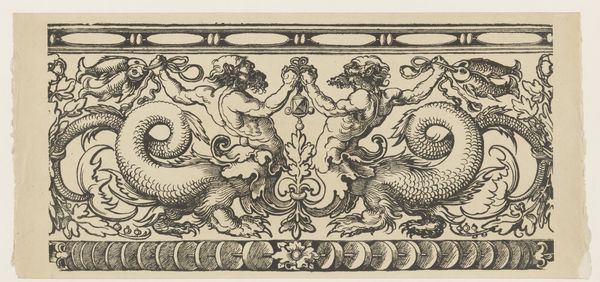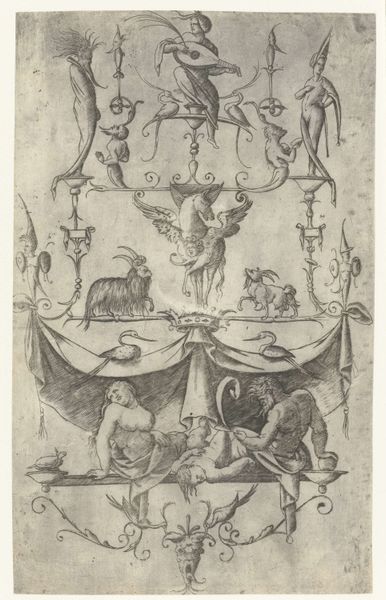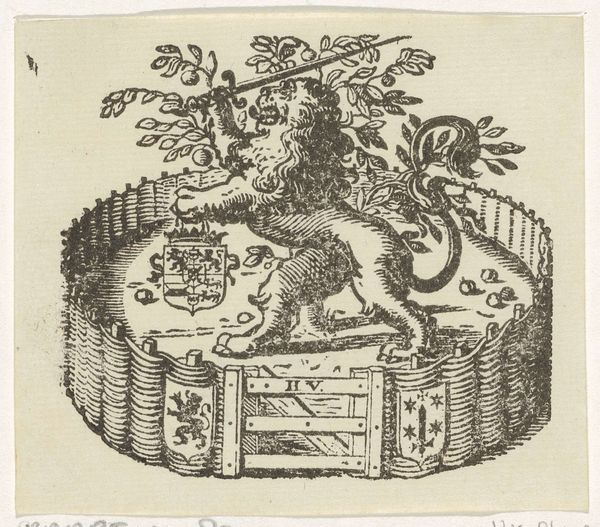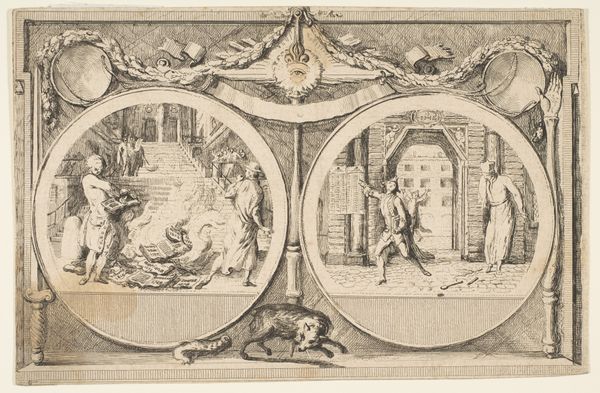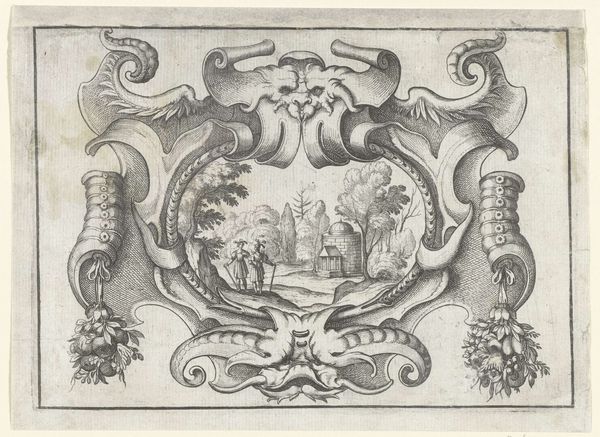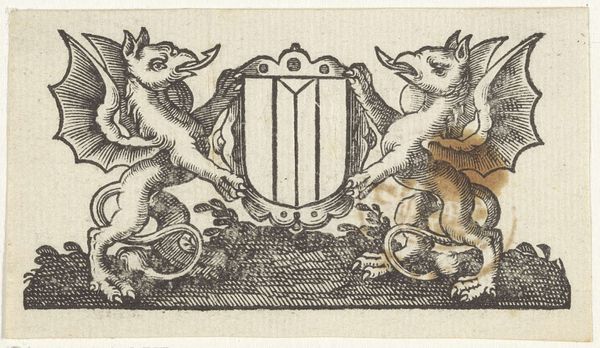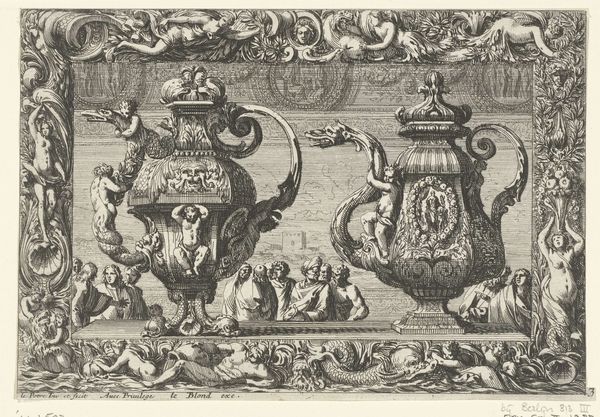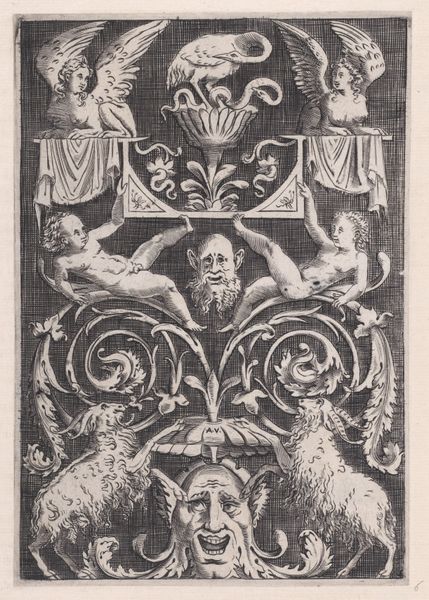
print, engraving
# print
#
figuration
#
form
#
11_renaissance
#
line
#
engraving
Dimensions: height 34 mm, width 63 mm
Copyright: Rijks Museum: Open Domain
This engraving, *Wapenschild met helm vastgehouden door twee vossen* was created by Nicolaes de Bruyn in 1594. The composition shows a symmetrical arrangement of heraldic elements, dominated by a central shield. The detailed lines create a strong contrast between light and shadow, highlighting the textures of fur, foliage and metal. The use of heraldic motifs and the symmetrical layout is intended to convey a sense of order and tradition. However, the choice of animals, particularly the foxes, introduces an element of ambiguity. In the semiotic system of the 16th century, foxes often symbolized cunning and deceit. Their presence destabilizes the conventional notions of honor typically associated with heraldry. Consider the function of the helmet at the top of the artwork as a signifier of nobility, but also as a literal container of the head. The engraving's meaning lies in its playful juxtaposition of established symbols with trickster figures, inviting us to question the values they represent. The contrast between the formality of heraldry and the subversive undertones of the animal figures offers a complex commentary on power, identity, and representation.
Comments
No comments
Be the first to comment and join the conversation on the ultimate creative platform.
